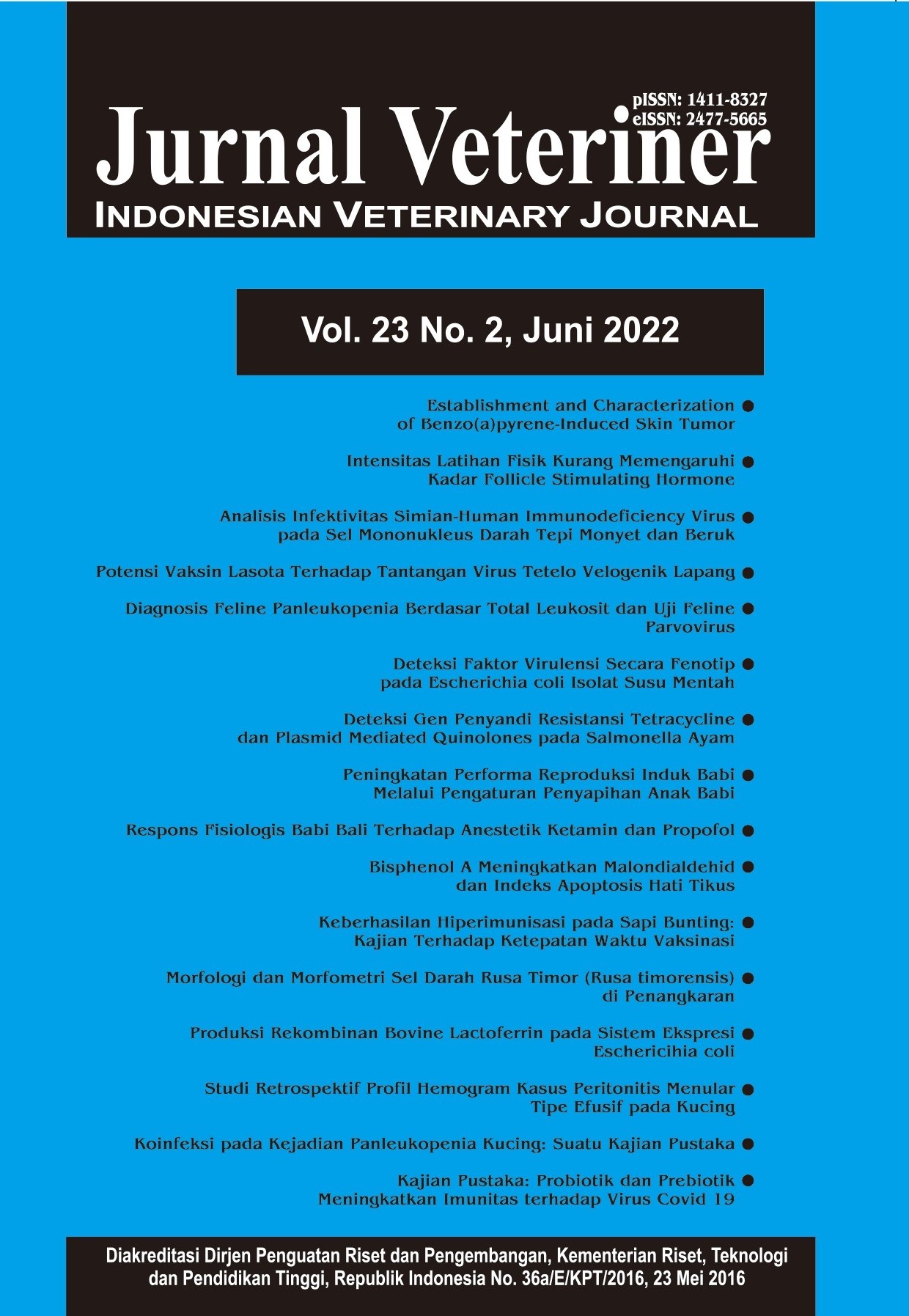The Effect of Sappan Wood Extract (Caesalpinia sappan L.) on Fetal and Placenta Histopathology of White Rat
Abstract
Histomorphological assessment of the placenta and fetus was more effective in assessing fetal development on a research scale for determined an active substance during the gestation period in experimental animals. The placenta and fetus connect in the development process. This study aimed to analyze the effect of giving ethanol extract of sappanwood on white rats’ placenta and fetal organs, which were examined histologically at 20 days pregnant rats. The pregnant rats were divided into six groups: The negative group was given aquadest, and treatment groups were given an ethanolic Sappan wood extract 100;200;300;400;500 mg/kg BW. Euthanized with CO2 and cesarian section was performed on pregnant rats on the 20th gestational day. Observation to record fetal body weight, body length, mean placental weight, and the histology of the placental area. Histomorphometry was used to measure the area of the fetal placental region. The group with sappan wood extract had no statistically significant difference in fetal body weight, fetal body length, fetal tail length, the weight placenta, and histomorphometry of the placenta compared to the control group (p > 0.05); this showed that the ethanolic extract of sappan wood does not have a toxic effect on the development of the placenta, which can interfere with fetal development during pregnancy. Sappan wood extract had a nontoxic effect on the placenta and fetal rat development on histological examination, even at the highest dose of 500 mg.kg-1 bw.



















